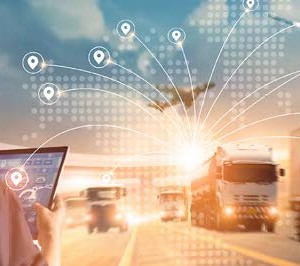A New Type of Performance
Dave Elniski
Cars, trucks, and all other vehicles have long been judged on their performance. A sports car will be advertised in terms of horsepower and how little time it takes to get to a certain speed. A pickup truck will be lauded on how much weight it can tow. SUVs might be celebrated for passenger capacity, luxury features, and off-road capabilities (or perhaps them all).
We measure vehicle performance numerically. Ground clearance, engine displacement, cargo volume, rim diameter: these can all be assigned numerical values, and enthusiasts will use these values to explain why they like a particular vehicle. In the commercial vehicle world, payload, powertrain and axle capacities, and gradeability are important elements when selecting the right vehicle for the job.
Vehicle connectivity is opening up an entirely new way of measuring a vehicle’s performance. Digital specifications like 5G/LTE connectivity, WiFi hotspot capability, and level of autonomy are new ways in which we can classify and value vehicles.
Throughout the world, people are becoming increasingly aware and in awe of digital technology. Smartphones and tablets have revolutionised business and recreation and provided us with tools that have brought social media into every aspect of our lives. Regardless of how people view these trends, they are here to stay.
People want to be connected. People want digital convenience. When people take vacations and other breaks to “get away from it all”, they take their devices with them. Vehicle connectivity is showing us that tomorrow’s drivers will use their cars as digital extensions of themselves to increase entertainment, maintain connectivity with those they care about, and keep them safe on the highways.
It is truly astounding to think about the differences in options between a vehicle from the early 2000s and a new vehicle on the lot today. In the 1990s, center high mount brake lights and airbags were relatively new; in the decade prior, gasoline fuel injection was so novel that many vehicles had plaques advertising the feature on their rear ends. Today, multi-stage airbags, automatic braking, and driver-monitored autopilots are the new features, and enough electric vehicles are on the roads that such technology is long past the proof of concept stage.
The ways we talk about new cars are changing and so are our expectations for the vehicles of tomorrow. To some, processing speed is of greater importance than top speed. What connected vehicles are showing us is there is an entirely new way to define “a great car”, and in this new definition, software means just as much as hardware.


